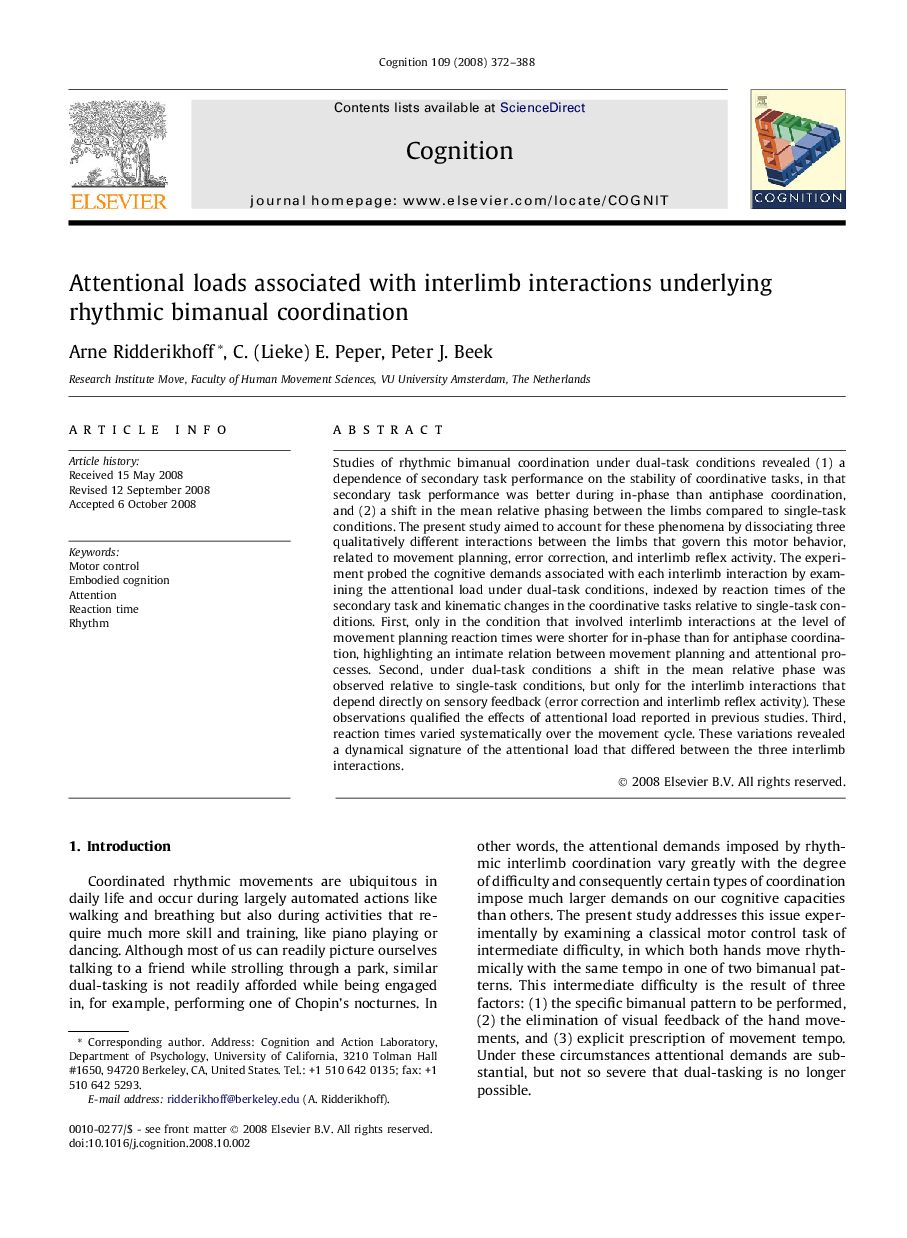| کد مقاله | کد نشریه | سال انتشار | مقاله انگلیسی | نسخه تمام متن |
|---|---|---|---|---|
| 927061 | 921936 | 2008 | 17 صفحه PDF | دانلود رایگان |

Studies of rhythmic bimanual coordination under dual-task conditions revealed (1) a dependence of secondary task performance on the stability of coordinative tasks, in that secondary task performance was better during in-phase than antiphase coordination, and (2) a shift in the mean relative phasing between the limbs compared to single-task conditions. The present study aimed to account for these phenomena by dissociating three qualitatively different interactions between the limbs that govern this motor behavior, related to movement planning, error correction, and interlimb reflex activity. The experiment probed the cognitive demands associated with each interlimb interaction by examining the attentional load under dual-task conditions, indexed by reaction times of the secondary task and kinematic changes in the coordinative tasks relative to single-task conditions. First, only in the condition that involved interlimb interactions at the level of movement planning reaction times were shorter for in-phase than for antiphase coordination, highlighting an intimate relation between movement planning and attentional processes. Second, under dual-task conditions a shift in the mean relative phase was observed relative to single-task conditions, but only for the interlimb interactions that depend directly on sensory feedback (error correction and interlimb reflex activity). These observations qualified the effects of attentional load reported in previous studies. Third, reaction times varied systematically over the movement cycle. These variations revealed a dynamical signature of the attentional load that differed between the three interlimb interactions.
Journal: Cognition - Volume 109, Issue 3, December 2008, Pages 372–388